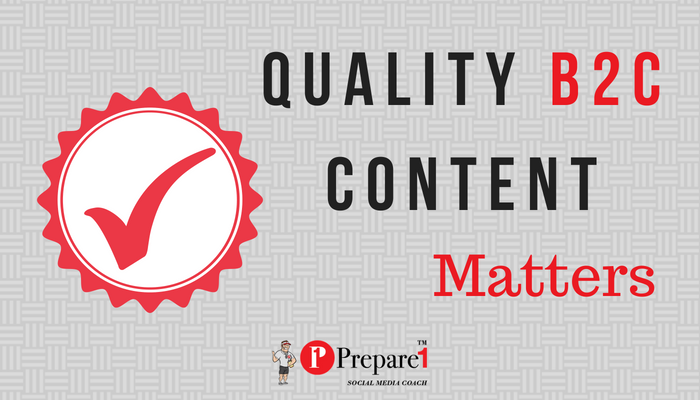
Do you produce your own B2C content?
If so, what kind of content do you produce? Is it effective?
Do you rely on quantity or quality?
Not all B2C content marketing distribution is created equal.
Some of you already know that…Right?
Before we dive into content distribution techniques, it’s important to discuss something fundamental to B2C marketing and content strategies. All content creation for brands should focus on quality, not quantity.
There is so much noise out there, even in certain niche industries, that it’s important to produce quality pieces of content that resonate with your audience.
Do you write sub-par blogs, create low quality videos, or throw together boring guides? Expect the reaction to those types of content pieces to be lackluster.
SET CONTENT MARKETING OBJECTIVES
Why do you want to develop content?
In what ways can content help your organization/company in generating leads and increasing customer base?
Attract new prospects and share new business ideas?
Create brand awareness or improve loyalty?
Or it should just be fulfilling your SEO goals. These are few questions that need to be answered before you even think of starting a content marketing strategy. Typically, a B2C organization uses a content marketing plan to build an audience, push profit, lower costs or to retain the customer.
Here are some more why brands should invest in content marketing:
- According to HubSpot, on an average, a company that regularly uploads blog content generates 55% more website visitors, 97% higher inbound links, and 434% higher indexed pages.
- Content+ says it helps you become an authority in a specific niche. One of the 3 top reasons that prompt people to follow a brand on a social media channel is “interesting content”.
- TMG Custom Media found that custom content is believed to be useful for 90% of online consumers.
- HubSpot also reviewed the conversion rates, which is 14.6% close rate for organic searches and 1.7% close rate for outbound marketing.
The list is long and will continue to benefit the marketers. So, once you have understood the objectives behind what content will be doing for you and how much time you should be investing in it, it is time to create and document your strategy.
CONTENT CREATION & DISTRIBUTION
Maximize your B2C content marketing distribution by integrating it into your content marketing strategy. This will help yield an expected outcome.
To improve your B2C content marketing distribution, let’s examine 2018 B2C Content Marketing Research conducted by Content Marketing Institute and MarketingProfs. It will help expose opportunities to improve your distribution reach and results.
- 68% of B2C marketers create content for their audiences versus their brand.
Two B2C content marketing distribution trends stand out:
1. 63% of B2C marketers deliver content on a consistent basis.
2. 50% of B2C content marketers outsource content creation, vs 23% of B2B marketers outsource content distribution.
Which types of digital technologies does your organization use specifically for managing its content marketing efforts?
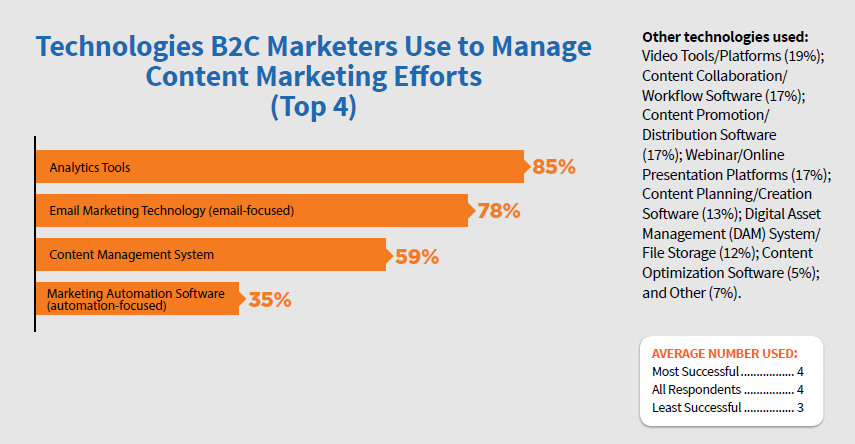
How often do you take the following concepts into account while creating content for your organization?
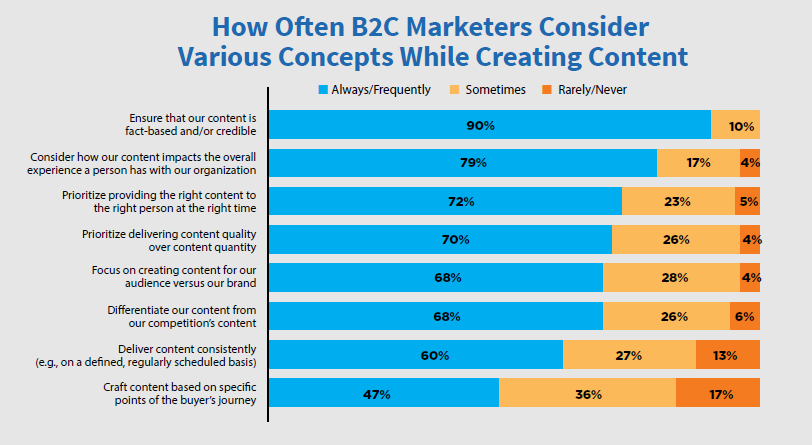
How would you rate the project management flow during the content creation process (from concept through completion) within your organization?
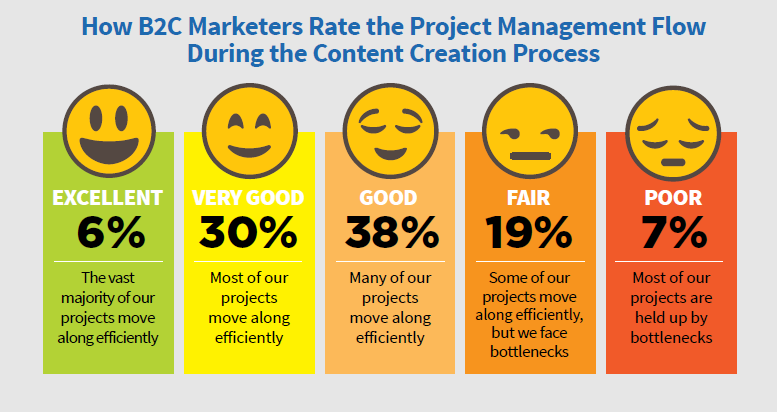
Which three are the most effective at helping your organization achieve specific objectives?
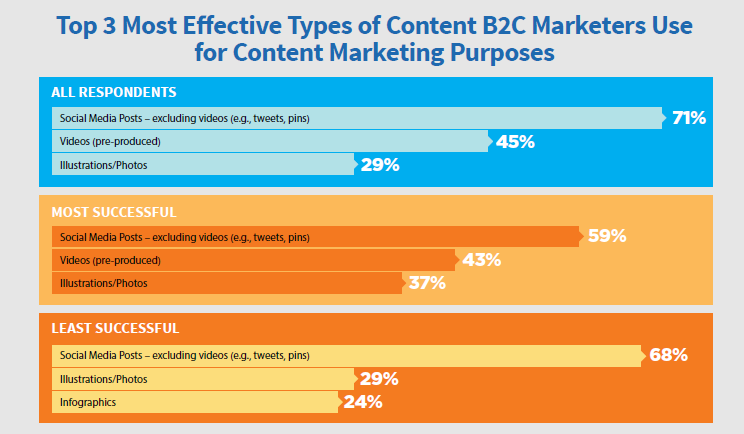
Which formats does your organization use to distribute content for content marketing purposes?
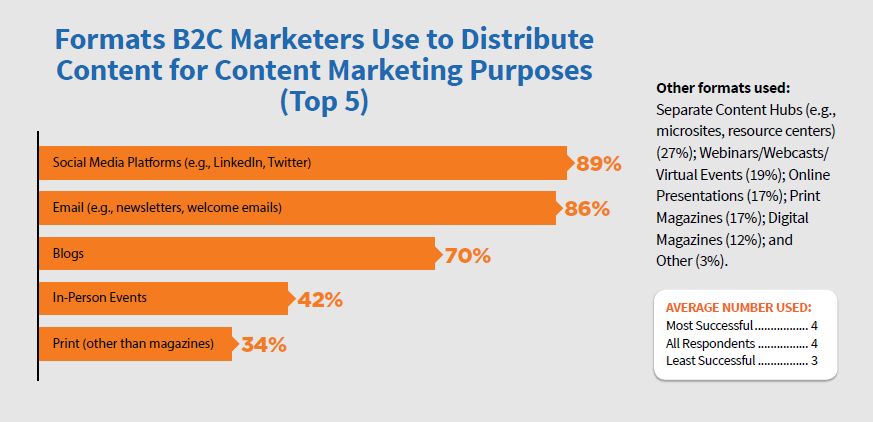
Of the formats you use to distribute content, which three are the most effective at helping your organization achieve specific objectives?
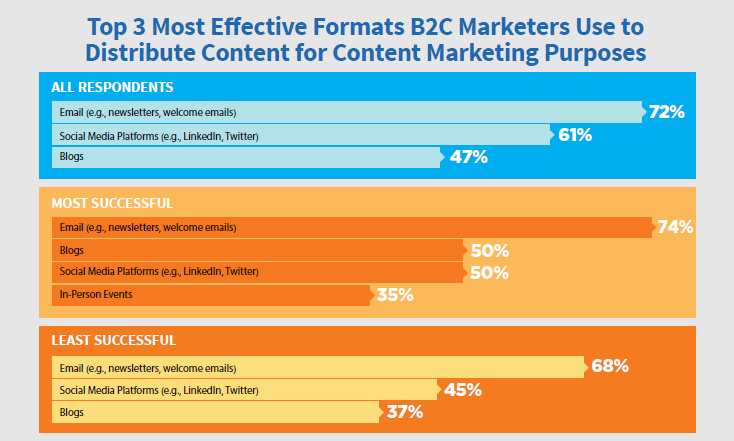
Which social media platforms does your organization use as part of its content marketing efforts?
2018 B2C Content Marketing Trends: Social Media Use
- 97% of B2C content marketers use Facebook.
- 84% of B2C content marketers use Twitter.
- 69% of B2C content marketers use LinkedIn.
- 66% of B2C content marketers use YouTube.
- 63% of B2C content marketers use Instagram.
- 43% of B2C content marketers use Pinterest.
- 37% of B2C content marketers use Google+.
- 11% of B2C content marketers use SnapChat.
- 8% of B2C content marketers use Slideshare.
- 5% of B2C content marketers use Medium.
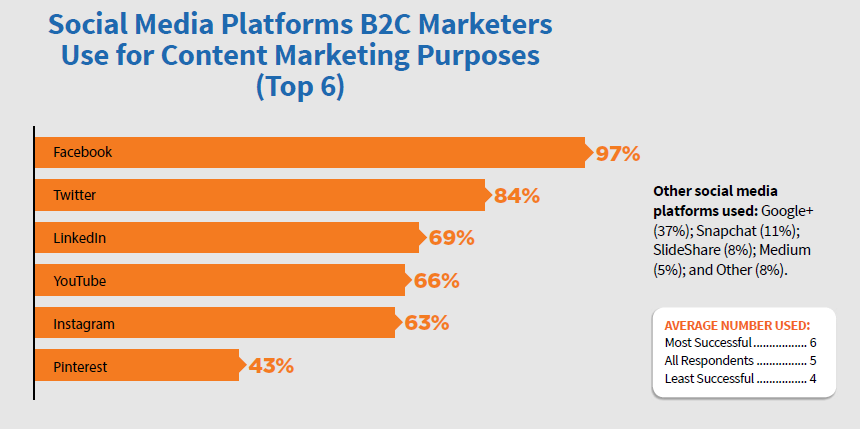
Which types of email does your organization use as part of its content marketing efforts?
Yes, email is not dead. In fact it continues to grow.
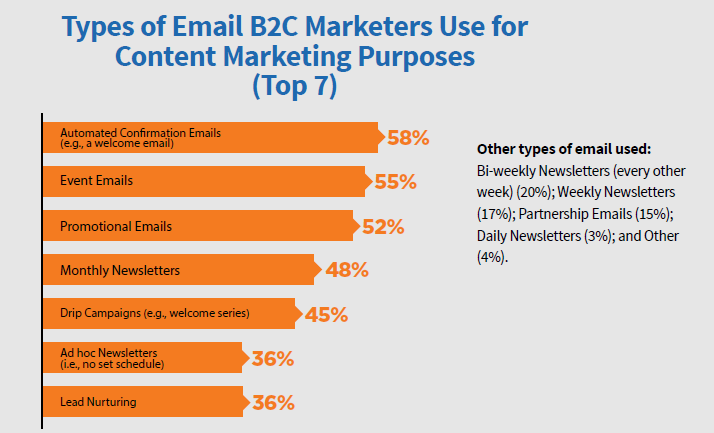
2018 B2C Content Marketing Trends: Content Formats
- 96% of B2C content marketers use non-video social media.
- 76% of B2C content marketers use video.
- 67% of B2C content marketers use illustrations and photos.
- 59% of B2C content marketers use infographics.
- 37% of B2C content marketers use interactive content.
- 35% of B2C content marketers use ebooks.
- 30% of B2C content marketers use case studies.
- 22% of B2C content marketers use live-streaming.
- 20% of B2C content marketers use research.
- 17% of B2C content marketers use mobile apps.
2018 B2C Content Marketing Trends:
- 89% of B2C content marketers use social media.
- 86% of B2C content marketers use email (newsletters and welcome emails).
- 70% of B2C content marketers use blogs. Blogs can distribute a variety of content formats including text, images, video, audio and presentations.
- 42% of B2C content marketers use in-person events. Use your local or retail presence to get prospects to participate in related activities. Also support community activities that help your prospects and customers.
- 34% of B2C content marketers use print (non-magazines). Other print options include newspapers and catalogs.
- 27% of B2C content marketers use content hubs (such as micro-sites and resource centers).
- 19% of B2C content marketers use webinars and virtual events.
- 17% of B2C content marketers use print magazines. Magazines allow marketers to reach an unplugged audience. For example, Kraft extended their content offering into print.
- 17% of B2C content marketers use online presentations.
- 12% of B2C content marketers use digital magazines.
ORGANIC IS MOSTLY DEAD, SO PAY TO PLAY
Yes, organic reach on social platforms is mostly dead. While your brand may still be able to organically reach your audience if they engage with your content regularly and have selected to receive your content updates, it’s important to note that organic reach on platforms like Facebook is mostly a thing of the past.
The answer however, is not to stop posting on social media. The social media usage statistics don’t lie; people are more active than ever on sites like Facebook, Twitter, and LinkedIn.
In addition to sharing content on your social media channels, using paid social promotions is effective for B2C companies. The major benefit of paying to promote content on platforms—particularly Facebook and LinkedIn—is the targeting capabilities.
You know your ideal audience—where they live and work, which industry they work in, their job title, etc. Use that knowledge. Get your content in front of your ideal audience who may not follow your brand on social media or be aware of your company.
FINAL THOUGHTS: Get Out of the Box
It’s easy to settle into the old routine of same type of content, using the same distribution methods. Maybe it’s time for a refresh? Looking at it from another perspective.
Time to hit the RESET Button and reassess?
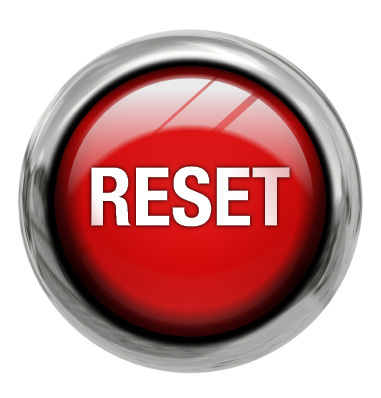
The best way to get results and amplify your content is to get outside of traditional content distribution strategies. Marketers spend a lot of time and effort to create awesome content pieces that will resonate with your target market.
B2C content marketing continues to be core to marketing success by focusing on prospects, customers and fans to build a house file. Specifically, content marketing has become below-the-line marketing targeted at supporting and driving sales.
The right content distribution strategy will wring the most value out of those content pieces and garner the most interest from your target audience.
Expand your B2C social media presence and distribution. At a minimum use Facebook both organic and paid. Also create videos for YouTube.
Take advantage of internal and third party print opportunities.
Integrate your B2C content efforts into your live content presentations and webinars.
The B2C Content Distribution bottom line:
- Use a variety of targeted B2C content distribution options across media to expand your reach.
- Continue distributing your B2C content over time.
Remember B2C content distribution isn’t once and done!
Continue redistributing your best content again and again and again.

Blair Evan Ball is a Social Media Coach and founder of Prepare1, a company that works with businesses, individuals and non-profits. He is a former executive with a Fortune 50 company, and his national division did $1Billion+ in sales annually.
Blair has written three e-books: Facebook for Business Made Easy, Facebook Pages for Business Made Easy, and WordPress Blog Setup Made Easy.
Blair also educates, trains entrepreneurs and business professionals how to amplify their brand, increase revenues, and raise more funds.
![[Study] How Will Businesses Change Their Social Media Activities 5 Golden Rules for Sharing on Social Media](https://www.prepare1.com/wp-content/uploads/2014/03/COACH-logohat-162x300.jpg) The Race is ON! | PREPARE | Get into the Game and WIN!
The Race is ON! | PREPARE | Get into the Game and WIN!
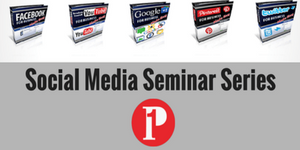



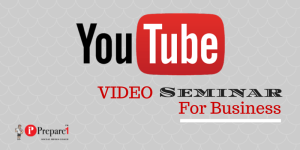
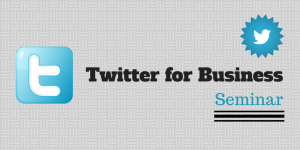
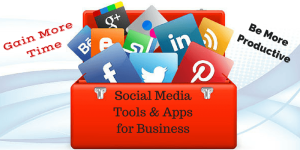
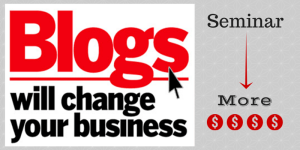


Comments on this entry are closed.